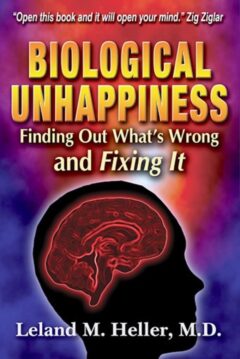The borderline disorder is usually associated with other neuropsychiatric problems. Attention deficit disorder is probably the most common one. Most of these “disorders” are really not illnesses at all, but traits that had advantages in a different time and environment – but they are a serious problem for patients in today’s society and it’s pressures. Successful BPD treatment requires successful treatment of all neuropsych problems:
1) Generalized Anxiety Disorder (GAD):
the body’s “flight or fight” system seems to be on all the time, causing fear related symptoms. One can experience mostly a “thinking” anxiety problem, called the “cognitive component” of the GAD, where the person is unable to sit peacefully with a quiet mind. This diagnoses is almost always the case when medications like Paxil, Prozac and Ritalin cause increased anxiety. Treating this disorder first is often necessary before successfully treating the other diagnoses.
2) Obsessive Compulsive Personality Disorder (OCPD):
like the BPD, it’s a medical problem, not a “character disorder.” In my opinion it is a condition people are born with. The body’s automatic switch that takes over when facing a life and death situation stay’s on all the time, constantly experiencing “life and death” sensations. Symptoms include inappropriate perfectionism, difficulty making decisions, inability to prioritize, and being a pack rat – all because the person feels literally like he/she will die if an error is made.
3) Obsessive Compulsive Disorder (OCD):
an anxiety disorder (and/or symptom) characterized by excessive and intrusive thoughts and ritual behaviors that help the person cope, such as washing hands excessively, repeatedly checking the door, etc. The B vitamin inositol in high doses can be as effective as standard medications.
4) Attention Deficit (Hyperactive) Disorder:
a reduced flow of blood to the brain areas responsible for staying focused on an activity or thought, and/or to think and consider before acting or speaking. Some patients have hyperactivity as well. It appears that the “disorder” does not go away at adulthood. I suspect a high percentage, if not a majority, of untreated or undertreated ADD individuals go on to get the BPD.
5) Rejection sensitivity:
along with dysthymia (rarely depressed, rarely happy – sort of in between) and irritability they compromise a syndrome I call “fractured enjoyment” (not a true medical diagnosis!). These symptoms collectively so far are only treatable with Prozac, and are the main reason Prozac has been so successful.
6) Panic Disorder:
results when the brain incorrectly assumes the individual is being choked to death. This is a true medical problem with a high suicide risk. Experiencing the body’s last ditch effort to avoid being “choked to death” is a terrible sensation, and the victim may live in terror that he/she will experience it again (preanticipatory anxiety).
7) Phobias:
irrational fears that limit the person’s ability to function, even though he/she knows they’re irrational. They are usually treatable medically, and include claustrophobia.
8) Cyclothymia:
is a relatively common mood swing disorder, similar to bipolar but with “mini highs” and “mini lows.”
(Dr. Heller’s book “Biological Unhappiness” explains the biology and treatment of these and other conditions).
Permission by Leland M. Heller, M.D.
